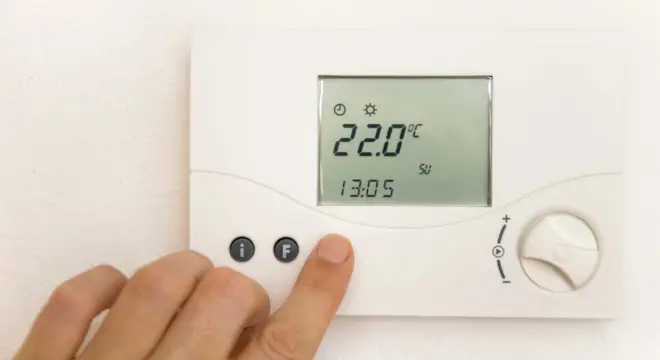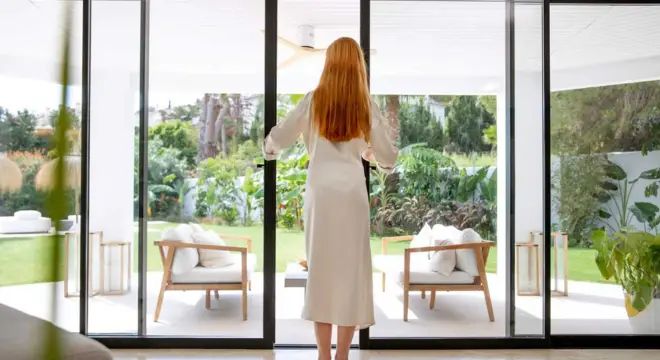The Ideal Room Temperature for Every Situation: 7 Effective Ways to Maintain Comfort and Save Energy
What does the ideal temperature of a room feel like? Is it the cuddly warmth that makes you want to sink into a duvet on a winter evening or the invigorating chill just enough to keep things cool in the lazy hours of an afternoon in summer? Well, it’s not as simple as cranking up the thermostat; it’s an art in balancing comfort, health, and even energy savings.
In this blog, we’ll bring out the best of everything, ideal room temperature for every setting, creating that comfortable, heavenly space for any possible relaxation scenarios. Think of everything from the ultimate sleep experience, productive workspace, or cozy hideaway; it’s all covered here!
Factors Affecting House Temperature
Further, it is temperature at home which is not just affected by some external weather condition, but also many other factors encompassing:
1. Insulation Quality
It would ensure in your particular home maintaining an indoor temperature to be stable. Example: have good insulation: very little heat buildup in summer, not letting heat escape in winter, and maintenance of a comfortable environment in a year.
2. Architectural Design and Layout
Your house directly affects the thermal comfort of your home. The various behavioral factors that influence heat distribution: window placement, sunlight exposure, height of the ceiling, and airflow patterns. For example:
- Wide high ceilings with big windows need heavy heating in the winter and a cool one in the summer.
- Smaller, compact building footprints with small openings perform better in terms of temperature control efficiency.
3. Number of Individuals
The increase in an inhabiting human subject in a room tends to make more warmth filled in that room. With their bodies naturally emitting heat, a crowded space would definitely tend to be hotter than a space filled with a lesser number of bodies.
4. Humidity Level
Humidity will determine how temperature is felt.
By making it difficult for sweat to evaporate from the skin, high humidity causes a space to be felt warmer.
On the other hand, low humidity can cause air to be felt cooler and less comfortable than an average humidity.
5. Use of Appliances-and Activities
Heat is produced in homes as part of everyday household activities such as cooking and keeping the electronics running. Even switching on lights raises room temperature. The effect of all of this heat added together can be felt the most in smaller, less ventilated spaces.
6. Personal Preferences and Physiology
Thermal comfort is subjective. Factors such as:
- Clothing choices
- Metabolism
- Health conditions
- can alter how individuals perceive temperature. What’s cozy for one person might feel chilly or too warm for another.
What Is the Ideal Room Temperature?
Have you ever wondered what the perfect room temperature is? Whether it’s the scorching heat of summer or the biting chill of winter, finding the sweet spot for comfort can feel elusive. While preferences vary based on geography, lifestyle, and even personal health, there are some general guidelines to help you strike the right balance between comfort and energy efficiency.
Let’s explore the ideal temperatures for every season and situation, so you can enjoy a cozy, comfortable home year-round
Ideal Room Temperature in Summer
If you’re at home, save electricity bills and beat the summer heat through your old-fashioned methods. Keep your thermostat setting to 78 degrees Fahrenheit. If the house is empty, then increase temperature or switch off air conditioning altogether. One superb way of doing this is through smart thermostats, which can even automatically program schedules while using geofencing.
Pro Tip: Install ceiling fans to make air circulation feel cooler than the thermostat setting.
Ideal Room Temperature in Winter
The temperature is between 68 and 70 degrees when awake during the wintertime on recommendation from experts. Nighttime temperature during the absence also drops a few degrees but is set between 68 and 70 degrees.
Did You Know? Lowering the thermostat by 7 to 10 degrees for eight hours each day, would save you 10% over the course of a year.
Comfortable Room Temperature for Sleeping
Experts on sleep assert that a cooler room is far better for quality sleep. They recommend keeping the bedroom to about 65°F because, during sleep, the body’s core temperature naturally drops. For most, this happens between the temperature range of 65°F and 68°F, which favors better recuperation.
Tip: Combine temperature settings for the most pleasant sleeping surface to breathe.
Ideal Home Temperature When You’re Away
When your home is empty, lowering or raising the thermostat based on the season can lead to significant energy savings.
- Summer: Set your thermostat to 85°F when you’re out. For extremely hot weather, adjust accordingly to protect sensitive electronics or indoor plants.
- Winter: Keep your thermostat between 55°F and 60°F to prevent frozen pipes while saving on heating costs.
Room Temperature for the Elderly
Older adults are more sensitive to temperature fluctuations, so maintaining a steady, comfortable environment is crucial. For those over 65, the recommended indoor range is 68°F to 74°F, as lower temperatures increase the risk of respiratory illnesses or hypothermia. Avoid settings above 80°F, as overheating can also pose health risks.
Ideal Room Temperature for Babies
Babies are particularly vulnerable to temperature extremes. Their ideal room temperature falls between 68°F and 72°F, which helps avoid risks like overheating or SIDS (Sudden Infant Death Syndrome). Monitor the nursery temperature carefully and use light, breathable clothing to keep your little one cozy.
Perfect Room Temperature for Pets
Pets thrive within specific temperature ranges depending on their breed, size, and fur type.
- Dogs: Keep the thermostat between 75°F and 78°F in summer and 68°F to 72°F in winter. Larger breeds might prefer slightly cooler settings.
- Cats: Cats generally prefer warmer environments. In summer, a range of 85°F to 90°F is suitable, while 68°F to 72°F works well for colder months.

Why Greater Control Over Room Temperature Matters
Did you know heating and cooling account for about 43% of household energy expenses? Proper temperature management isn’t just about comfort—it also saves money and reduces your environmental impact.
Here’s how you can achieve better control:
- Smart Thermostats: Automate temperature adjustments and monitor usage remotely.
- Energy-Efficient Practices: Schedule HVAC usage to align with your daily routine.
- Consistent Monitoring: Regularly check temperature settings to avoid extremes and ensure optimal energy consumption.
Maintaining the right temperature improves more than just energy efficiency—it boosts your overall well-being. Comfortable environments promote focus, reduce stress, and enhance productivity, making your home the perfect haven in any season.
7 Best Ways to Maintain Your Perfect Room Temperature
1. Automate Temperature Control with Smart Technology
Modern thermostats make temperature management effortless.
- For Central HVAC Systems: Smart thermostats let you program schedules, monitor settings remotely, and optimize energy use, ensuring your home stays comfortable without constant adjustments.
- For Ductless Systems: Mini-split smart thermostats are a game-changer. They allow you to control devices like mini-splits, portable ACs, and window units using your smartphone. Features like geo-fencing, weekly scheduling, and automatic adjustments make maintaining the ideal temperature easier than ever.
Tip: Look for thermostats compatible with your HVAC setup for maximum efficiency.
2. Control Humidity for a Comfortable Climate
Temperature isn’t the only factor affecting comfort—humidity plays a huge role too.
- Ideal Range: Keep indoor humidity between 30% and 50% to prevent excess sweating or that clammy feeling.
- Tools: Use a dehumidifier in summer or a humidifier in winter to maintain balanced humidity levels.
Proper humidity control reduces the need for frequent thermostat adjustments, making it easier to maintain a stable indoor climate.
3. Use HVAC Zoning for Precision Control
HVAC zoning allows you to divide your home into separate areas or “zones,” each with individual temperature settings.
- Example: Set a cooler temperature upstairs, where hot air tends to accumulate, while keeping downstairs slightly warmer.
- Benefits: Avoid unnecessary cooling or heating in unoccupied areas and reduce energy usage while enjoying tailored comfort in active spaces.
4. Optimize Windows for Seasonal Comfort
Windows can either help or hinder your efforts to maintain the perfect temperature.
- In Summer: Use window shades, UV films, or tinted screens to block excessive heat from sunlight.
- In Winter: Open curtains or blinds during sunny days to let natural warmth fill your room.
- Pro Tip: Insulated curtains or double-glazed windows can minimize heat loss and help maintain consistent indoor temperatures year-round.
5. Regular HVAC Maintenance
An old or poorly maintained HVAC system struggles to maintain a steady temperature, leading to uneven heating or cooling.
- Common Issues: Leaky ducts, refrigerant leaks, and worn-out components.
- Solution: Schedule regular HVAC maintenance to keep your system running efficiently. If repairs become too frequent or costly, consider upgrading to a newer, more energy-efficient model.
6. Conduct Energy Audits
Energy audits can help identify hidden issues that disrupt temperature stability.
- What to Expect: Professionals inspect your home for air leaks, such as cracked windows, gaps in doors, or poorly sealed ducts.
- Why It Matters: Fixing these leaks prevents temperature fluctuations and reduces energy waste.
- Tip: Many HVAC companies offer affordable or even free energy audits—an investment worth considering for long-term savings.
7. Thoughtful Placement of Heat-Generating Appliances
Home appliances like refrigerators, computers, and ovens emit heat during use, which can disrupt your ideal room temperature.
- Best Practices: Place heat-generating devices in less critical rooms where temperature precision isn’t as important, like storage areas or garages.
By managing appliance placement, you can prevent unexpected temperature spikes in your living spaces.
Ideal Temperature: The Key to a Comfortable Home
Creating the perfect indoor environment starts with achieving the ideal home temperature. Tailoring the thermostat to suit the needs of everyone in your household—whether it’s infants, pets, or elderly family members—ensures a space that promotes health, comfort, and well-being.
Beyond comfort, maintaining a balanced home temperature can significantly affect energy efficiency. Small adjustments, like lowering the thermostat when you’re away or investing in smart technology, can lead to substantial savings without compromising on coziness.
With thoughtful temperature management, you can transform your home into a sanctuary that meets everyone’s needs while being mindful of energy consumption.


